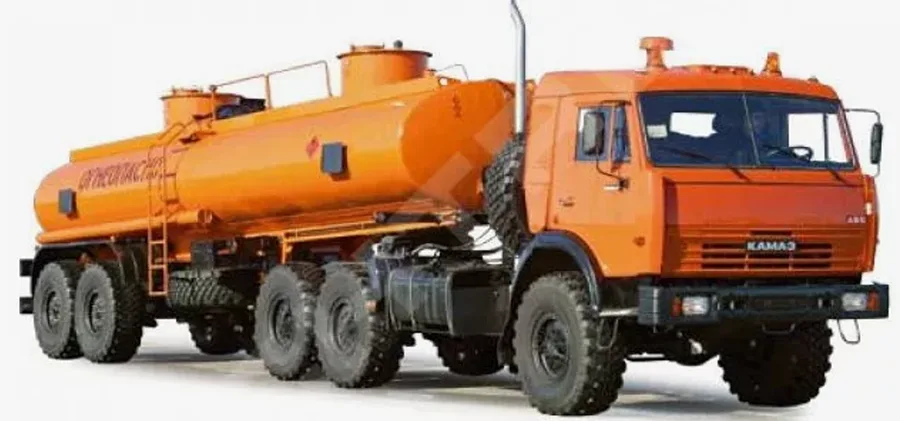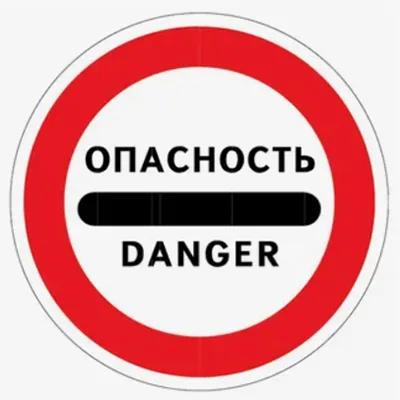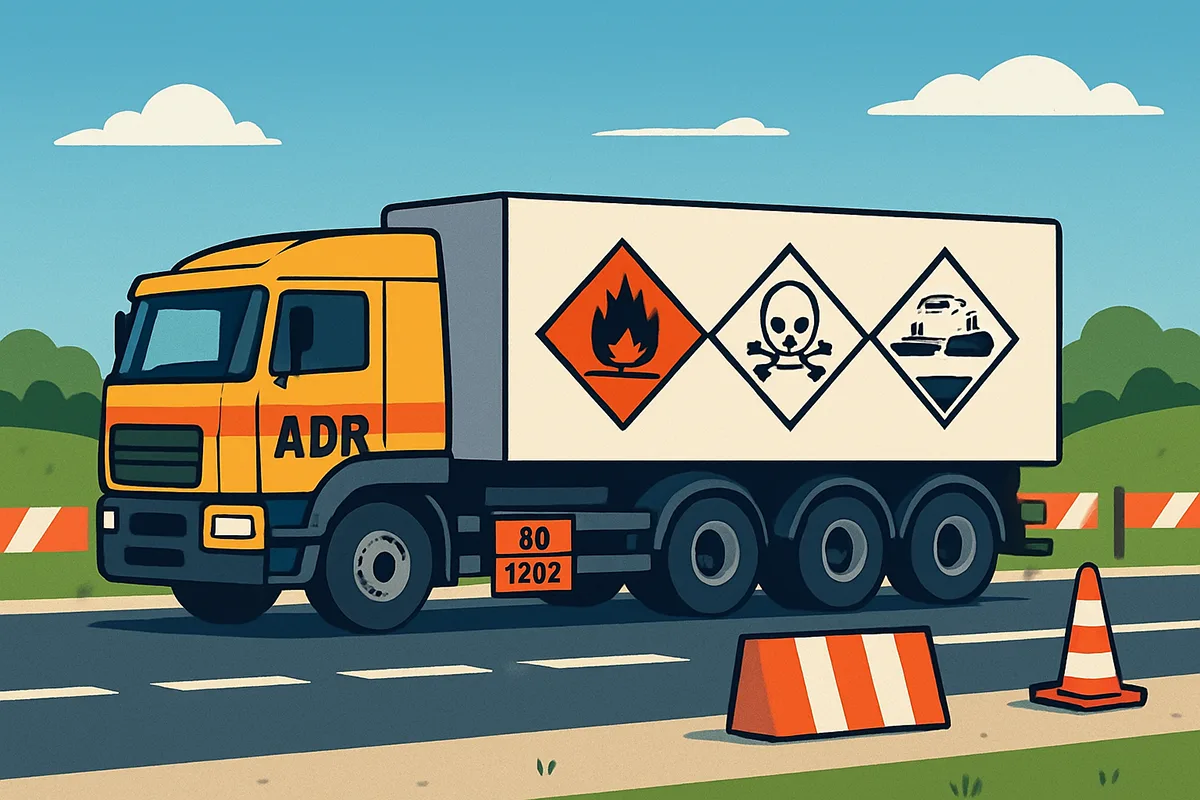Rules and Definitions for the Carriage of Dangerous Goods by Road
ADR (European Agreement concerning the International Carriage of Dangerous Goods by Road) is an international treaty (full name — European Agreement concerning the International Carriage of Dangerous Goods by Road), adopted under the auspices of the UN, aimed at standardizing the rules for the transport of hazardous substances by road between countries.
The main objective of ADR is to establish unified requirements for packaging, labeling, vehicle equipment, technical facilities, driver qualifications, and the preparation of all necessary documentation in order to ensure the safe transport of dangerous goods (explosive, flammable, toxic, radioactive, and others) and minimize risks to people, property, and the environment.
Main Provisions of ADR:
- The Agreement defines which substances are considered dangerous goods and how they must be classified.
- It sets strict requirements for vehicles and packaging materials for the transport of each hazard class.
- It sets out rules for labeling and documentation of cargo.
- Drivers are required to undergo special training and obtain an ADR certificate confirming their right to transport dangerous goods of certain classes.
- The agreement is in effect in EU countries, Russia, and a number of other states.
Compliance with ADR standards is mandatory for all participants in the process — from the consignor to the carrier. Violating these requirements entails serious fines and risks to safety.
Federal Regulatory Documents Governing the Carriage of Dangerous Goods by Road in the Russian Federation
- Order of the Ministry of Transport of the Russian Federation No. MS-7-r of 11.02.2013 “On the organization of work to verify and assess the necessary knowledge of drivers of motor vehicles carrying dangerous goods and candidates for advisers on the safety of the carriage of dangerous goods by road” (as amended on 12.01.2023 No. VS-4-r);
- Order of the Ministry of Transport of the Russian Federation of 14 May 2015 No. 172 “On the approval of a model professional training program for advanced training of drivers engaged in the carriage of passengers and goods in international traffic, a model advanced training program for specialists in the organization of road transport in international traffic, an additional training program for drivers engaged in the carriage of passengers and goods in international traffic, and an additional training program for specialists in the organization of road transport in international traffic” (with amendments and additions of 19 December 2018);
- Order of the Ministry of Transport of the Russian Federation of 23 June 2016 No. 175 “On the approval of the Model supplementary professional program for the advanced training of advisers on the safety of the carriage of dangerous goods by road in the field of international road transport, and the Model supplementary professional retraining program for advisers on the safety of the carriage of dangerous goods by road in the field of international road transport”
- Order of the Ministry of Transport of the Russian Federation of 28.07.2020 No. 257 “On the approval of the procedure for conducting examinations and issuing professional training certificates for advisers on the safety of the carriage of dangerous goods by road” (Registered 19.11.2020 No. 60980);
- Order of the Ministry of Transport of the Russian Federation of 30.07.2020 No. 265 “On the approval of the procedure for issuing driver training certificates for motor vehicles carrying dangerous goods and the approval of such training courses” (Registered 13.11.2020 No. 60894; with amendments of 28.09.2021 No. 328; registered 29 October 2021 No. 65641);
- On the International Carriage of Dangerous Goods by Road (ADR) VOLUME -1 (773 pages)
- On the International Carriage of Dangerous Goods by Road (ADR) VOLUME -2 (711 pages)
- Order of the Ministry of Transport of Russia No. 342 of 12.10.2021 “On amendments to the Order of the Ministry of Transport of the Russian Federation of 23 June 2016 No. 175 ...” (Registered in the Ministry of Justice of Russia 15.02.2022 No. 67280);
- Order of the Ministry of Transport of the Russian Federation No. 1 of 11.01.2022 “On the approval of model programs for professional training in programs for the advanced training of drivers transporting dangerous goods in accordance with the ADR Agreement” (Registered 15.02.2022 No. 67295)
Vehicle Equipment According to ADR — External Appearance of Vehicles and Tank Semi-Trailers



The powder fire extinguisher OP-4 class A, B, C, E is intended for extinguishing solid, liquid, gaseous substances, as well as electrical installations up to 1000V.
Technical specifications and the number of fire extinguishers are determined by the vehicle weight:
- Up to 3.5 tons – 2 units., total weight – 4 kg. One of the extinguishers should be compact for convenient extinguishing of fires in confined spaces;
- Up to 7.5 tons – 2 units., total weight at least 8 kg. One extinguisher should also be aimed at extinguishing fires in confined spaces;
- Over 7.5 tons – 2 units., total weight – 12 kg. Here, also one extinguisher must be compact.
Additional requirements apply to fire extinguishers regarding their weight, which also depends on the vehicle mass:
- Up to 3.5 tons – 2 kg,
- Up to 7.5 tons – 6 kg,
- Over 7.5 tons – 6 kg.
The compactness requirement is aimed at rapid localization of fire in the cabin, cargo, or engine compartment. Fire extinguishers must be placed in easily accessible locations for drivers. Special cases or boxes made from materials resistant to high and low temperatures fully meet this goal. Furthermore, ADR requires the equipment of vehicles carrying dangerous substances with a portable powder extinguisher weighing 2 kg (marked OP-2). It is designed for extinguishing fires of classes A, B, and C. According to ADR 8.1.4 Fire-fighting equipment.

Fixing devices – wheel chocks
Vehicles carrying dangerous goods use wheel fixation with the parking brake during stops. In cases where special equipment is not equipped with this system or it is defective, at least one wheel chock (stop block) must be installed. Its size should meet ADR requirements, which prescribe determining this parameter based on the ratio of vehicle mass to wheel diameter. ADR 8.3.7
The use of parking brakes and wheel chocks, ADR 8.1.5.2

ADR additional equipment kit
The ADR additional equipment kit is assembled by specialists. The list of included equipment and personal protective equipment is regulated by the hazard class of the substance to be transported.
The ADR kit itself does not contain hazardous equipment or substances. All additional equipment and PPE must be compactly packed in bags convenient for transport and use. Quick access to ADR items is essential for prompt use in case of an emergency – an accident. ADR 8.1.5 Other equipment and PPE

Warning signs, special equipment
Vehicles transporting dangerous goods must be equipped with two "Danger" signs. They are used to warn others about hazards or accidents, placed in front and rear of the vehicle no closer than 50 meters. Signs for quick deployment are equipped with supports to maintain stability.
ADR 8.1.5 Other equipment and PPE

Flashing beacon
Installation and activation of a flashing beacon on the vehicle is required in cases of:
- Transporting explosive substances;
- Transporting flammable substances;
- Transporting radioactive elements;
- Transporting toxic substances posing increased danger.
Special vehicles transporting dangerous goods, regardless of class, must be equipped with hazard warning signs. These warning plates must be placed on the sides, front, and rear of the vehicle.

Special vehicles transporting one substance, e.g., diesel fuel, must be equipped with warning signs. These are orange or red diamonds located on the lateral surfaces of the tank. Their design must comply with the hazard class of the transported cargo. Additionally, bright orange rectangular plates of the established standard are attached at the front and rear of the tanker. They must display the UN number characteristic of the dangerous goods. Moreover, hazard symbols indicating environmental danger are placed on all sides of the vehicle. If the tank is divided into sections, each section must be equipped with the warning signs described above. Plates at the front and rear of the tanker must provide information on each substance transported in the sections according to the UN.

If all sections contain the same substance, it is not necessary to mark each section separately. However, a warning plate indicating environmental hazard must be installed on the tanker.
Environmental Hazard Sign

This sign is part of the marking group; it warns about the transport of solid or liquid substances that may harm the environment. The hazard factors include:
- Sharp increase in substance toxicity when in contact with water;
- Formation of a stable toxic environment upon contact with water;
- Biological and non-biological decomposition processes (applies to organic chemical elements);
- Possibility of biological accumulation.
Maintaining the condition of warning signs is very important. Ideally, signs should be reflective for good visibility in low visibility conditions and at night. Markings must be clear and undamaged, fully corresponding to the nature of the transported goods.
Observance of all recommendations regarding vehicle equipment with warning signs ensures safe transportation of substances hazardous to people and the environment.
Rules for Issuing Certificates of Vehicle Approval for the Road Transport of Dangerous Goods (ADR)
- The vehicle must be technically sound and ready for operation;
- The vehicle must be marked with hazard signs according to the permitted hazardous classes of substances;
- The additional equipment used must be in good condition and securely fastened;
- The vehicle must be equipped with personal protective equipment (depending on hazard class);
- The vehicle must be equipped with an ADR kit;
The vehicle must be equipped with:
- Installed ERA-GLONASS system;
- Tachograph;
- Flashing beacons of established standards;
- Working engine brake (retarder);
- Functional brake system with ABS;
- 4-channel online video recorder (must be certified under points 21-31, 41-43 of Resolution No. 969) with hard disk or SD cards ensuring data transmission to the transport company and controlling authorities;
- Certified communication and alerting system as per Government Resolution No. 969.
Requirements for Obtaining the State Service for Issuing (Extending) an ADR Certificate
- Request for issuance (extension of validity) of a certificate of approval of vehicles for the carriage of dangerous goods;
- Identity document of the applicant;
- In cases provided by the legislation of the Russian Federation: a power of attorney, contract, or other document confirming the applicant’s authority to act on behalf of the vehicle owner;
- Certificate of official approval of the tank type or its copy — if transporting dangerous goods in built-in tanks (tank trucks) or battery vehicles;
- Certificate of testing and/or inspection of the tank with a reference to the list of substances permitted for transport, or to the tank code and alphanumeric codes of special provisions — if transporting in built-in tanks or battery vehicles;
- State fee for issuing a vehicle approval certificate — 1500 rubles;
- For extension of a previously issued vehicle approval certificate — 1000 rubles.
Application for Issuance (Extension) of a Certificate of Vehicle Approval for the Carriage of Dangerous Goods


Driver’s Required Documents when Transporting Dangerous Goods
Certificate of Approval for Vehicles Carrying Certain Dangerous Goods


Waybill

ADR Driver Training Certificate


The ADR certificate is valid for 5 years. To continue transporting dangerous goods, the driver must undergo refresher training before the certificate’s expiry date. Violation of dangerous goods transport rules (by a driver without an ADR driver training certificate) entails administrative liability (Art. 12.21.2 of the Code of Administrative Offences of the Russian Federation).
Rules for Refueling with a Mobile Fueling Unit (ATZ) at Construction Sites

Before dispensing fuel from a mobile ATZ, the refueling driver must follow these requirements:
- Park the ATZ on a specially prepared site in compliance with fire safety requirements;
- Secure the vehicle and trailer with the handbrake and install wheel chocks;
- Ground the ATZ;
- Check the availability and serviceability of primary fire extinguishing equipment;
- Check the tightness of pipelines, hoses, and fuel dispensing equipment;
- Dispense fuel through a specially calibrated meter;
- Dispense fuel wearing PPE appropriate for the season, with hands protected by special gloves;
- Dispense fuel only into designated fuel containers, vehicle fuel tanks, special machinery, and construction machinery. Order of the Ministry of Labour of the Russian Federation No. 915N of 16.12.2020
For the purpose of monitoring safe work processes, use devices, equipment, or a system of devices and equipment that provide remote video, audio, or other recording of the work operations.


